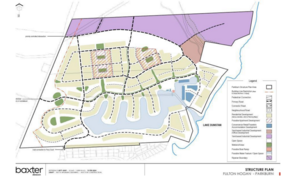Otago bird survey reveals conservation needs
03 October 2024, 4:15 PM
 The Southern rock wren, also known as pīwauwau, is considered a threatened species in Otago. PHOTO: Supplied / Oscar Thomas
The Southern rock wren, also known as pīwauwau, is considered a threatened species in Otago. PHOTO: Supplied / Oscar ThomasThe Otago Regional Council (ORC) has released its first ever stock take of the bird population in the region, shedding light on the current conservation status of its avian inhabitants.
The landmark study provides crucial insights into the conservation needs of our feathered friends and the pressing challenges they face.
ORC senior terrestrial ecologist Dr Scott Jarvie said to protect and restore our threatened species, we need to understand which species are living in our region and how they are doing.
The report assessed 283 bird species across Otago, with 32 native species deemed regionally threatened, while four others are classified as regionally at risk.
A total of 135 species are considered regionally non-resident native, 22 species are regionally not threatened, while 25 are regionally introduced and naturalised, 10 species are regionally data deficient, and 43 species are now regionally extinct.
Three species were identified as conservation translocations where they have been deliberately moved to Otago for conservation benefit and currently have populations.
Two of them were reintroduced while one was introduced.
Dr Jarvie said the key threats to birds in Otago are habitat loss and degradation, introduced mammalian predators, human disturbance, and climate change.
“The data from this report will be instrumental in shaping future conservation efforts.
“We need everyone — residents, businesses, and local groups — to pitch in and help protect Otago’s unique birdlife.
“This isn’t just a council effort – it’s a community effort. Every action counts.”
The study also highlights 10 species that are introduced, not established.
This is where a release has been documented, but there is no self-sustaining population in the wild or a deliberate introduction has been documented, and published records indicate the species bred, or probably bred, but it is no longer around.
Two species were not assessed but have been assessed in earlier national assessments.
ORC general manager science and resilience Tom Dyer said Otago wouldn’t be the same without the melody of birdsong.
“This report is an important reminder of the incredible avian diversity that graces our region.
“This regional assessment is a crucial step in understanding and mitigating the impacts of environmental changes and other activities on bird populations.
“The findings will guide Otago Regional Council in achieving its biodiversity management objectives, ensuring our native bird species continue to thrive,” Tom said.
The assessment highlights one species endemic to Otago is the Otago shag/matapo, which only breeds in the region but can be seen in other regions.
Otago serves as a national stronghold for eight bird species, meaning more than 20 per cent of the national population is here in the region.
They include migratory shorebirds and domestic migrants, emphasising the region's critical role in preserving these species.
The report highlights the importance of local habitats such as wetlands, forests, and coastal areas in maintaining bird populations and the crucial role Otago residents play in bird conservation.
The ORC completed its first conservation status of birds in Otago in conjunction with a panel of bird experts, including Bruce McKinlay, from the Department of Conservation - Te Papa Atawahi, Nicolas Rawlence and Oscar Thomas from the University of Otago - Ōtākou Whakaihu Waka, and Dawn Palmer, an independent ecologist and the Otago regional representative for Birds New Zealand.



